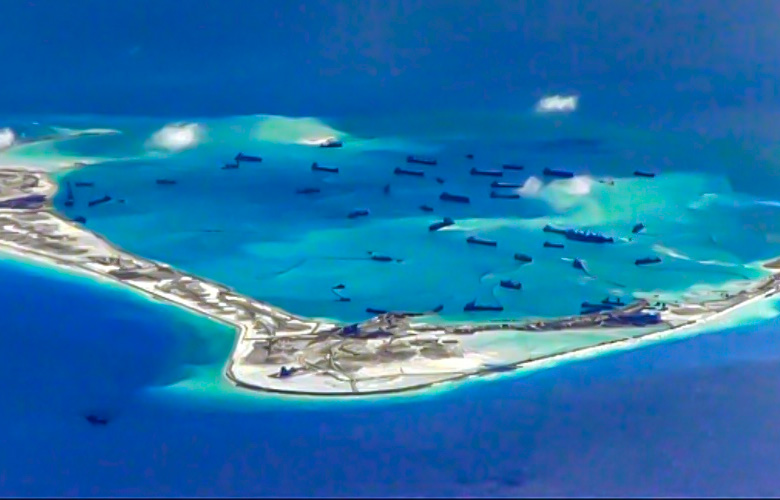Alwaght- The South China Sea is witnessing rising tensions fueled by United States hegemonic policies apparently aimed at preventing the meteoric rise of China as a counterbalance in the region and globally.
The US has spared no efforts to flex its muscle in the Asia-Pacific, in a bid to show its global hegemony that is already waning nowadays.
The Asia- The Pacific region and in particular much of China and Southeast Asia, was under the control of colonial European powers with Britain controlling Malaysia, Myanmar (then called Burma), and parts of China, and France controlling Cambodia, Vietnam, and Laos.
During the last century, the two major World Wars saw a momentous decrease of Western power and influence across Asia Pacific. However, the United States retained hegemony over Japan, the Philippines and South Korea, many other nations first ejected their colonial occupiers, then established independent nations.
The US continues to maintain a significant number of troops and deadly weapons in Japan and South Korea ready to launch an assault against China and any other adversary.
Although North Korea is mentioned as the major target of US military presence on the ‘Korea-Japan Front’ , Pyongyang is merely a pretext for Washington to station the Pentagon’s forces and US nuclear assets in South Korea and Japan and to target China and Russia.
Beijing and Moscow are well aware of the real targets of the US military in East Asia. This is why China and the Russian Federation have always worked to prevent a confrontation in the Korean Peninsula from occurring by mediating in the tensions that North Korea has with South Korea and the United States.
Washington’s militarization agenda is tied to a multilateral trade agenda that has hegemonic undertones. In other words, there is a trade dimension to the militarization and the igniting of tensions in the Asia-Pacific.
To achieve its nefarious agenda, the US is using a strategy of artificially creating tensions and instigating problems between China and other countries in the region. This is indeed the reason why the US has been getting itself involved in bilateral disagreement between China and several local countries over territorial issues. China has reiterated its sovereignty over nearly all of the energy-rich South China Sea, which is also claimed in part by Taiwan, Brunei, Vietnam, Malaysia and the Philippines. China's sovereignty and claims are grounded in history and upheld by successive Chinese governments.
Washington has sided with China’s rivals in the territorial dispute, with Beijing accusing the US of meddling in the regional issues and deliberately stirring up tensions in the contested waters. Each year about $5 trillion in trade passes through the sea, which also has large deposits of oil and natural gas.
Despite its promise to stay neutral, the US has actually taken a clearly lopsided approach favoring China's rival claimants and even staged various military maneuvers that infringed upon China's sovereignty. Washington has sent its warships and warplanes to waters and airspace near China's territory in the South China Sea in recent years. US naval build up under the ‘Pivot to Asia’ doctrine, is root cause of tensions in the Asia-Pacific.
Late January, China accused the US of seeking maritime hegemony in the name of freedom of navigation after a US warship sailed within 12 nautical miles of a Chinese island in the South China Sea.
Meanwhile on Friday the US and the Philippines announced Friday five locations where American forces will have access under a new defense pact, including one facing disputed islands in the South China Sea.
The implementation of the defense pact signed two years ago with the Philippines comes at a time of heightened tension in the South China Sea. Philippines is one of the most aggressive South China Sea claimants, and designating an air base facing the Chinese Nansha Islands as one of the five locations which American forces will have access to have fueled speculation about Washington's real purpose behind the moves. Certainly any attempts to disturb the South China Sea and destabilize Asia would not be allowed by China and most other countries in the region. Meanwhile as the US continues to provoke China, tensions with the Russians are increasing too. Both Beijing and Moscow are nuclear powers and have taken have taken strategic steps to prepare for a possible global military conflict with Washington and its allies. Global military tensions will only decrease of the US stops its hegemonic tendencies and paves war for a real multi-polar international system based on mutual respect.



























